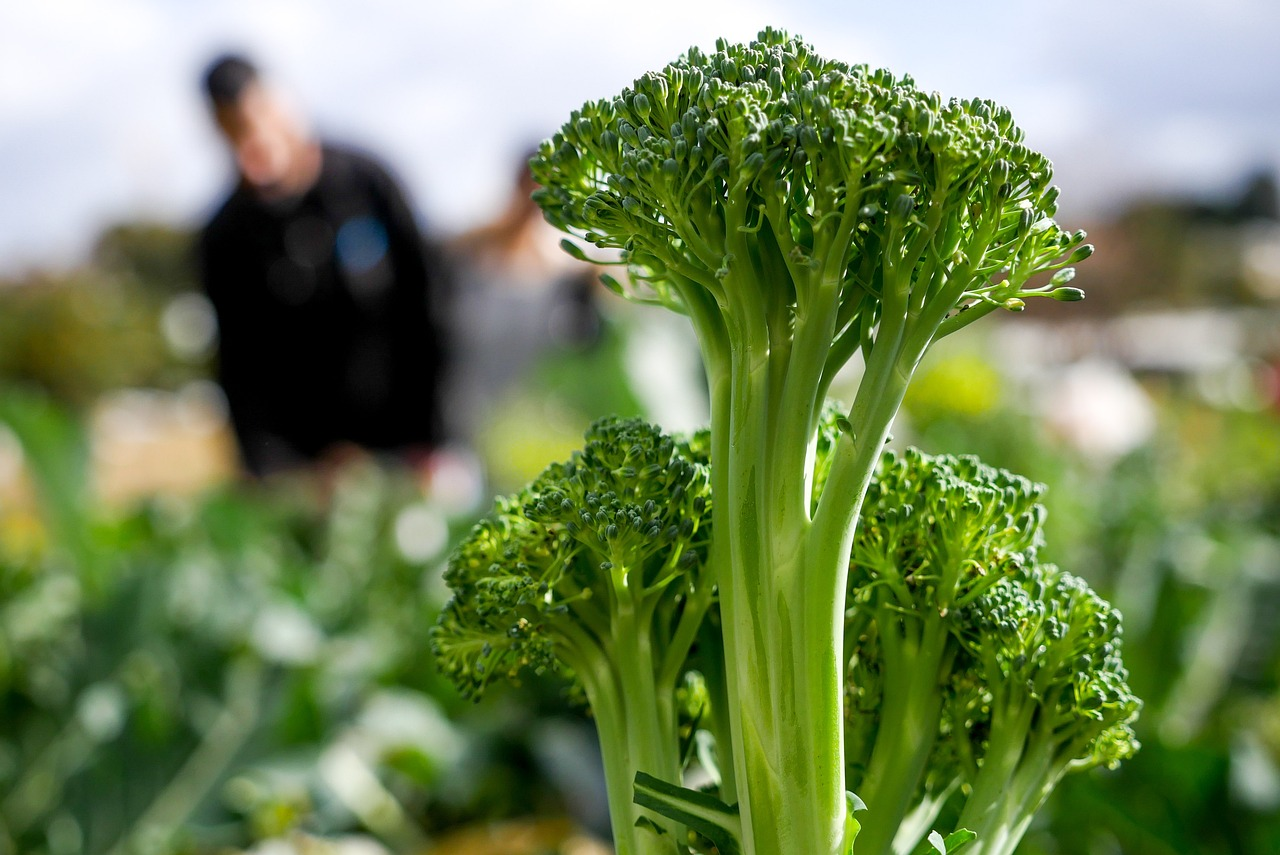
How to Grow Broccoli: Tips for Cultivation
Broccoli is a very healthy vegetable that is very popular. You can also easily grow this vegetable in your garden. You can find out what to consider when growing broccoli with tips on planting, caring for and harvesting broccoli in this article. In addition to good and bad companions for mixed cultivation, we have prepared some mixed cultivation planting plans with broccoli and stem cabbage for you.
This Article Contains:
- Growing Broccoli: What You Need to Know
- Varieties: About Wild Broccoli, Colorful & Hardy Varieties
- The Best Location & Soil
- Propagating Broccoli: Tips for Growing
- Sowing Broccoli: This Is How It Works
- Planting Broccoli: Spacing & Timing
- Companion Plants for Broccoli
- Your Companion Planting Plan With Broccoli or Stem Cabbage: Examples for the Garden and Raised Bed
- Care for Broccoli: Fertilize, Water & Mulch Correctly
- Harvest Time: Tips for Harvesting Broccoli
- Frequently Asked Questions About Planting and Harvesting Broccoli
Quick Overview
How to Grow Broccoli
- How does broccoli grow? Broccoli can grow as a perennial, but is usually grown as an annual.
- Where does broccoli grow? As a heavy feeder, broccoli needs humus-rich, medium-heavy soil. The location should be sunny to semi-shady.
Sowing Broccoli Seeds
- As dark germinators, the seeds are planted about 0.5 to 1 cm/0.2 to 0.4 in deep in the soil.
- Direct sowing outdoors (either March/April or September) or cultivation on the windowsill (February/March to July) is possible.
- Germination time is about 10 days at temperatures between 18 and 22 ° C/64.4 and 71.6 ° F.
Planting Broccoli Plants
- Spacing: 45 - 60 cm/17.7 - 23.6 in x 45 - 50 cm/17.7 - 19.7 in
- Timing: between April/May and September, depending on variety
- Companion plants: artichoke, eggplant, beans, chilli, cucumber, potato, leek, carrot, bell pepper, daikon, beet, lettuce, celery, tomato,...
- Antagonistic plants: cabbage, strawberry, turnip, horseradish, rocket, chives, onions,...
Growing Broccoli: What You Need to Know
Broccoli (Brassica oleracea var. italica) is part of the cruciferous family (Brassicaceae) and is therefore closely related to other Types of Cabbage such as cauliflower, Brussels sprouts and pointed cabbage. Growing broccoli in your own garden is worthwhile as it is rich in vitamins, minerals and antioxidants, making it a healthy side dish. Originally from Asia Minor, it was first cultivated in the Mediterranean region before making it to Central Europe. In warmer climates, broccoli grows as a perennial plant that sprouts again and again. In our latitudes, however, it is often grown as an annual vegetable.
How Does Broccoli Grow?
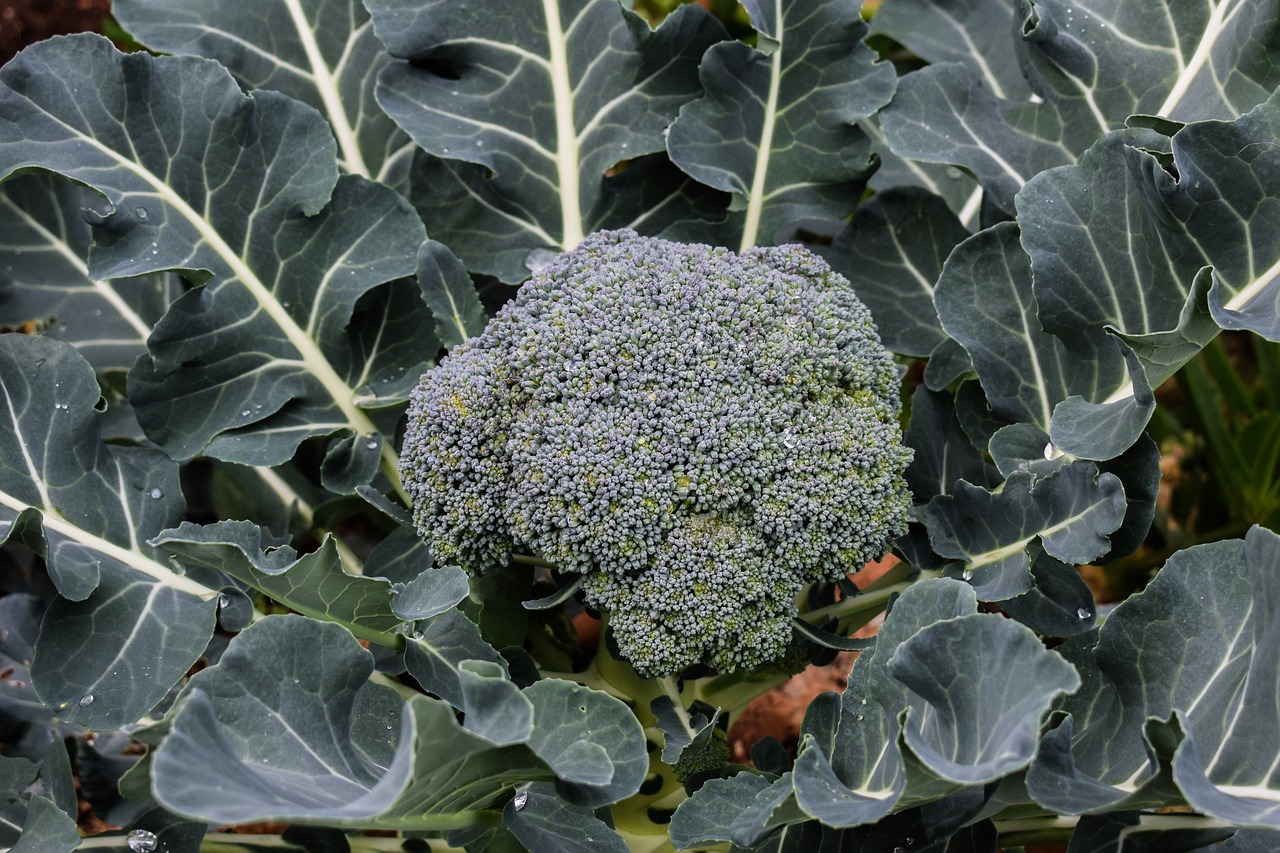
A broccoli plant is very similar to Cauliflower in its growth. Its cabbage-typical leaves are large and bright green with an elongated oval shape and wavy edges. These are located on the stem of the broccoli plant and surround the broccoli head. The broccoli head is the most popular part of the plant and is eagerly eaten. It consists of closely spaced individual flower buds that are still green. This is why broccoli must be harvested before it flowers, because if you wait too long, the broccoli head will loosen and the buds will start to flower. Beautiful yellow flowers develop and the broccoli is then overripe. It often develops a bitter taste with the blossom and loses its aroma and healthy ingredients. Broccoli also grows very strongly underground and develops deep roots.
Varieties: About Wild Broccoli, Colorful & Hardy Varieties
When you hear broccoli, you probably immediately think of the classic green broccoli head. Popular varieties include 'Ramoso Calabrese' or 'Calabrese Natalino'. But you will be surprised, because the diversity of broccoli varieties is huge. In addition to green varieties, there is now also the 'Purple Magic' variety with purple broccoli heads. This is a novelty: although there have already been wild purple stem cabbages, there has never been a variety that produces a large, purple broccoli head. However, the different broccoli varieties not only vary in color, but also in size, taste and harvest time.
Wild Broccoli: Stem Cabbage or Broccoli Rabe
Wild broccoli (Brassica rapa var. cymosa) is an heirloom variety from Italy with a more intense flavor. In contrast to newly bred varieties, wild broccoli does not form a large head, but many small florets that can be harvested. This is why it is also known as sprouting broccoli. 'Cima di Rapa' is a particularly popular and seed-resistant variety of stem cabbage. A variety with purple florets is 'Purple Sprouting'. These wild broccoli varieties are also usually hardy and can grow in the bed for several years.
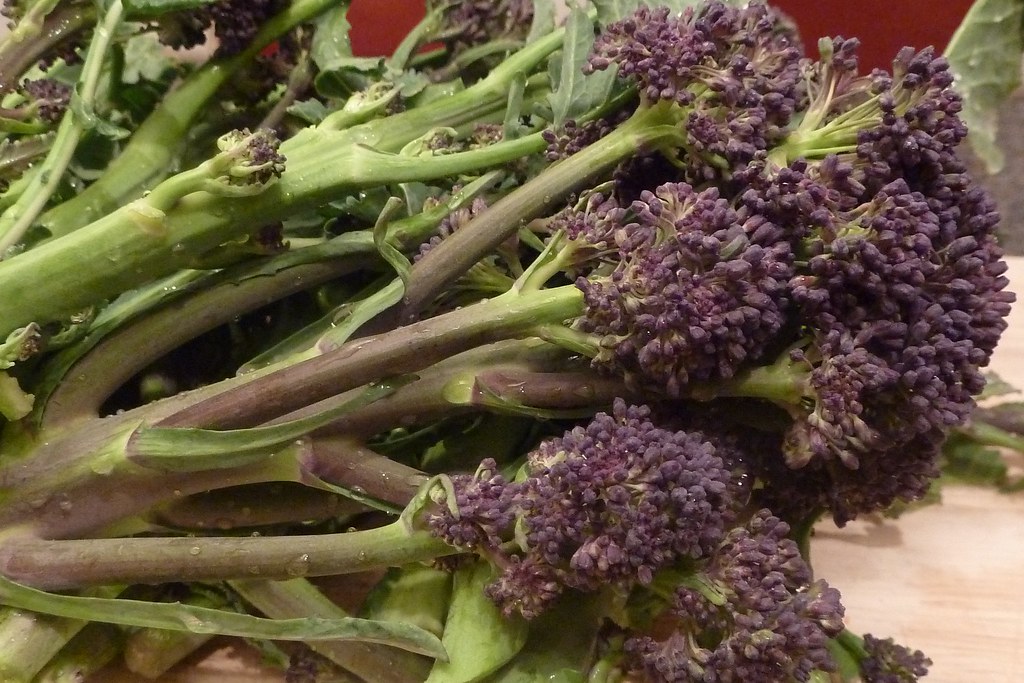
The Best Location & Soil
Broccoli is a heavy feeder with a high nutrient requirement. This deep-rooted plant therefore needs a deep, loose and humus-rich soil in order to thrive. The water supply should be good and regular for healthy growth. Therefore, medium-heavy, loamy soils are ideal. It is best to choose a sunny to semi-shady location for your broccoli plant.

Want to Learn More?
In our library you will find information on the individual varieties with cultivation periods, tips on planting and harvesting. You will also find good and bad companion plants to help you plan a mixed crop.
View Library NowPropagating Broccoli: Tips for Growing
Broccoli benefits from pre-growing, as the vegetable is very popular among garden dwellers. When direct sowing without protection, it can quickly happen that your seedlings are eaten by snails, beetles etc. immediately after germination and have no chance to grow. Pre-breeding also extends the growing period and allows you to harvest earlier.
You can plant broccoli outdoors from as early as April. Start your cultivation one to two months before you plan to plant out so that the young plants have enough time to develop. You can therefore start growing between the end of February and March. If you start pre-growing in February, you should definitely get a plant lamp, otherwise the young plants will quickly go to seed. Make sure that your seedlings are in a place with temperatures between 18 and 22 ° C/64.4 and 71.6 ° F. Broccoli plants do not like it when it is too hot. You can find More Tips for Successful Cultivation in this article. However, the best time to start growing varies from variety to variety. There are also late varieties that are not planted in the field until September. In this case, you should start cultivation in July. Cultivation is particularly advantageous in summer, as broccoli starts to sprout (i.e. flower) quickly in warm temperatures. You can control the temperatures more on the windowsill.
And This Is How Cultivation Works:
Place two to three seeds in pots with nutrient-poor potting soil. Although broccoli is a dark germinator, the seeds are quite small, which is why they should not be planted too deep in the soil. The sowing depth should be around 0.5 cm/0.2 in. Now water carefully and keep the seedlings evenly moist. At temperatures between 15 and 20 ° C/59 and 68 ° F, the small seeds should germinate within up to 10 days.
Sowing Broccoli: This Is How It Works
Of course, you can also sow broccoli seeds directly outdoors in a vegetable or raised bed. It is important to ensure that your soil is well prepared. To satisfy your broccoli seedlings' hunger for nutrients, you should prepare the soil with compost or other organic long-term fertilizers. Alternatively, you can also sow a green manure beforehand and work it in. You can find out How to Improve Soil That Is Too Sandy or Too Clayey in this article. The soil should also be deep and loose. To loosen the soil before sowing, you can go through the bed with a digging fork. This is usually not necessary for raised beds, as the soil here is usually deep and loose anyway. To prevent the small seeds from being overgrown by weeds, you should also clear the bed of weeds.
Sowing works in the same way as described above: You place the seeds 0.5 to 1 cm/0.2 to 0.4 in deep in the soil. Here, too, it is advisable to sow several seeds in one place in case one seed does not sprout. Leave a space of around 45 to 60 cm/17.7 - 23.6 in between the seeds so that the plants have enough room later on. Direct sowing is advisable either early in the year between March and April or in late summer in September. Broccoli prefers it when it is not too hot. This allows you to harvest before the hot summer months or in the fall. Otherwise, you run the risk of your broccoli going into flower and not producing beautiful heads.
Planting Broccoli: Spacing & Timing
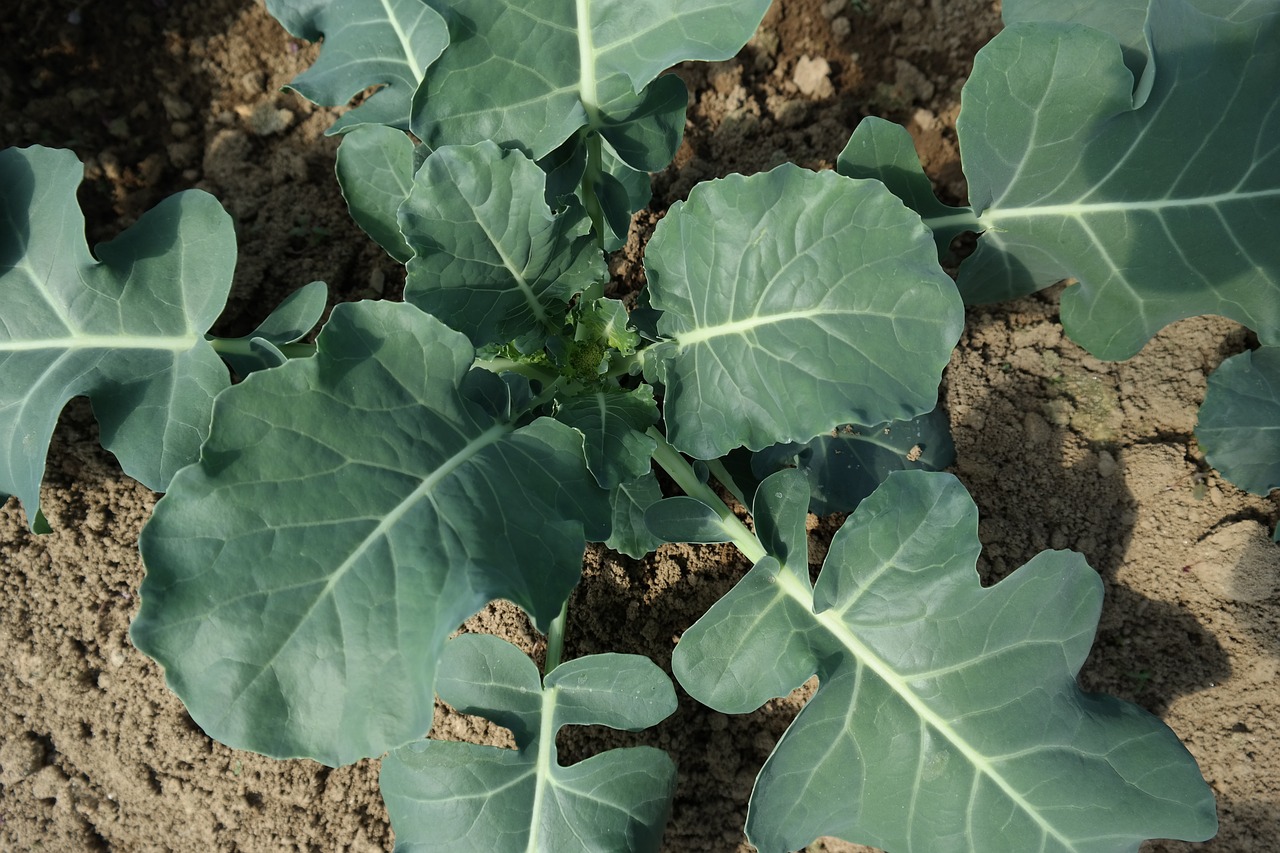
As soon as your broccoli seedlings are big enough, you can plant them outdoors in a vegetable patch or raised bed. To do this, they should have developed at least 4 to 6 true leaves after the cotyledons, which usually takes between 6 and 8 weeks. The time for planting varies greatly depending on the variety. Some varieties are planted in spring between April and May, while there are also late varieties that can be planted as late as September. The best time to plant out your variety can be found on the seed packet.
Remember to harden off your young plants before planting out to acclimatize them to the conditions outdoors. You can find Instructions on How to Harden off Plants in this article. If you don't harden off, your young plant may get a shock when you plant it out, which is usually followed by growth depression. This means that your plant will stop growing for a while and will need some time to acclimatize. For some young plants, however, this can also mean death.
When planting out, you should make sure you leave enough space so that the plants can develop properly as they grow. We recommend a planting distance of 45 to 60 cm/17.7 - 23.6 in, depending on the variety. You should leave between 45 and 50 cm/17.7 - 19.7 in between the rows. After planting, it is important to water the broccoli plants well so that the roots come into contact with the soil and can take care of themselves.
Our tip: You can use our yield calculator to roughly calculate how much harvest you can expect from your planned bed area. This is particularly helpful for self-sufficient growers to see how much space you need or how many plants you should plant for a certain yield.
Companion Plants for Broccoli
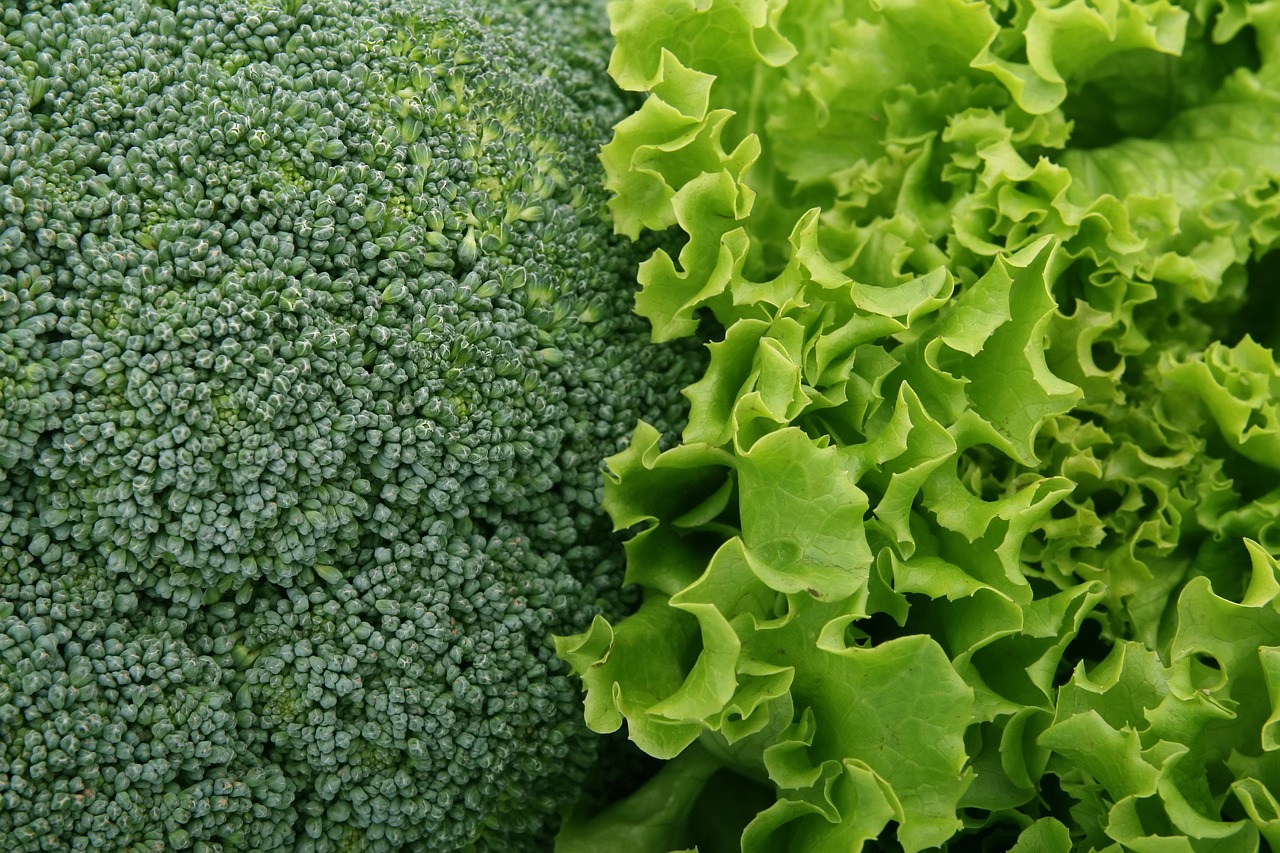
Planting your broccoli in companion planting has many advantages. In terms of plant health, companion planting improves the resistance of your plants in the bed. On the one hand, there are some plants that are effective against various diseases and pests in the bed, such as many herbs and flowers. On the other hand, a high level of biodiversity helps to ensure that crop-specific pests are less likely to spread and colonize your bed. A particularly common pest of cabbage plants is the cabbage white butterfly. There are some crops that you can plant next to broccoli that are effective against the cabbage white butterfly and are supposed to keep it away with their smell. You can find out which vegetables, herbs and flowers these are below. If you would like to know more about How to Combat and Prevent the Cabbage White Butterfly, you can read more here.
Plants Against Cabbage White Butterflies:
- Vegetables: celery and tomatoes
- Herbs: aniseed, basil, mugwort, peppermint, rosemary, sage, thyme
- Flowers and other plants: Elderberry, privet, nasturtium, tansy, marigold
Table: What Goes Well With Broccoli?
Good and bad companion plants of broccoli can be found in the table. As always, plants of the same family are usually not the best companions (exception: daikon and radishes). You should also alternate between heavy, medium and light feeders in your bed and rotate over the year so that the soil is not deprived of nutrients on one side. You can find More Information on Planning a Mixed Crop With Cabbage With Tips on Crop Rotation and Succession Cropping in our article.
| Companion Plants | Antagonistic Plants | ||
|---|---|---|---|
| artichoke | Sweet Pepper | collard greens (green and palm kale) | rocket salad |
| aubergine | Parsnip | cauliflower | chives |
| beans | Physalis | napa cabbage | rutabaga |
| chilli | garden radish | strawberry | jerusalem artichoke |
| dill | radish | fennel | onions |
| pea | rhubarb | garlic | |
| cucumber | marigold | kohlrabi | |
| chamomile | beetroot | cabbage (white cabbage & savoy cabbage) | |
| potato | salad | lovage | |
| coriander | sage | turnip | |
| leek | celery | horseradish | |
| chard | soybean | mizuna | |
| mint | spinach | okra | |
| carrots | thyme | pak choi | |
| oregano | tomatoes | brussels sprouts |
Your Companion Planting Plan With Broccoli or Stem Cabbage: Examples for the Garden and Raised Bed
We have prepared planting plans for your companion planting with broccoli in the garden or raised bed. Take a look to get some inspiration.
Care for Broccoli: Fertilize, Water & Mulch Correctly
There is nothing unusual to consider when caring for broccoli. It is important to provide an even supply of water without waterlogging. You should water regularly and prevent the soil from drying out. A layer of mulch can help you to retain moisture in the soil for longer. You can find More Tips on Watering Plants Properly and Saving Water here.
Probably the most important care measure for broccoli is fertilization. As a heavy feeder, broccoli needs a lot of nutrients. You should therefore prepare the soil well with slow-release organic fertilizer before planting and, if necessary, top up with organic liquid fertilizer during the season. You can read About Which Fertilizers You Can Use and What You Need to Consider When Fertilizing Organically here. Depending on how well you have prepared the soil, it may only be necessary to top up once or twice during the season. If this is not the case, you can apply fertilizer every two weeks. Simply observe your plants and react if they show signs of deficiency that indicate a lack of nutrients. At the same time, you can also regularly check your plants for diseases and pests.
Harvest Time: Tips for Harvesting Broccoli
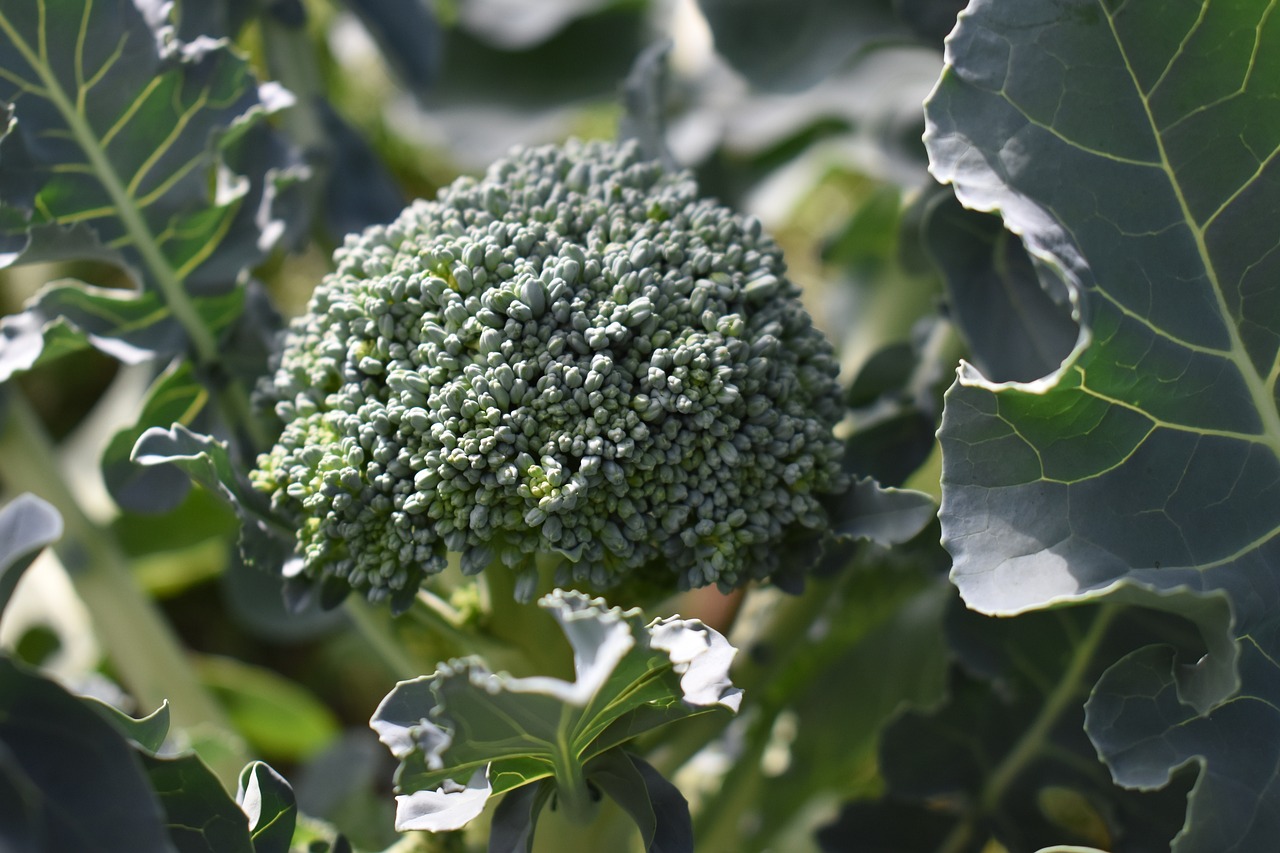
Harvesting broccoli is very easy! To do this, simply cut off the ripe broccoli head with a sharp knife as soon as it is ripe. Cut off the head of the main shoot together with about 15 cm/5.9 in of the stem, which makes it easier to store the broccoli head. After harvesting the broccoli head on the main shoot, many broccoli plants develop further smaller side shoots with small heads, which you can also harvest at a later date.
When Can You Harvest Broccoli?
The harvest time varies greatly from variety to variety. Early varieties, which are planted between April and May, usually ripen from July to the beginning/end of October. Late varieties that are planted in the bed over the winter or late fall can then be harvested from November to May. You can usually find the exact harvest window on the seed bag to give you an initial indication.
You can recognize the ideal time for harvesting by the fact that the main head has formed beautiful, firm and dense green buds. It is important to keep an eye on the head every day. Over time, the head will loosen up and the florets will begin to bloom bright yellow. Flowering is indicated by the buds turning yellow. If you notice this, you should harvest as quickly as possible!
How Long Does Broccoli Take to Grow?
It is difficult to give a general answer here, as it depends very much on the growing conditions and the variety. Summer broccoli, for example, grows much faster than winter broccoli. However, it can be roughly said that broccoli seeds germinate after around 5 to 10 days and then grow into a substantial young plant within 6 to 8 weeks. The plant then develops to harvest maturity within 1 to 2 months. In total, it takes a good 3 to 5 months for a broccoli seed to develop into a finished broccoli head.
My Broccoli Is Yellow: Is It Still Edible?
As just described, a broccoli head turns yellow as soon as it starts to flower. As the process of flowering requires some energy, the head loses nutrients, but can still be eaten without hesitation! Sometimes it doesn't taste quite as good as a green broccoli head, but it is always worth using food instead of throwing it away. A yellow broccoli head can therefore be eaten without any problems!
If you have any questions or comments, please write to us at magazin@fryd.app.
Would you like to receive helpful gardening tips all year round and plan your own beds optimally? Then register here or download the Fryd app for Android or iOS.
Fryd - your digital bed planner
Cover picture by Erol on Pixabay.
Marie
Current Topics in the Community

#red , #tuesday

Liked 1 times
#testpostcount

Dec 2025
Popular Articles

Companion Plants for Carrots: What (Not) to Plant With Carrots

Companion Plants for Celery : What (Not) to Plant With Celery?

Strawberry Types: List of Best Strawberry Varieties

Companion Planting With Strawberries: Companion Plants and Planting Plan

Basil Varieties & Types at a Glance

What to Plant With Cabbage: Good and Bad Companion Plants

Fertilizing Strawberries: Home Remedies & Natural Fertilizers at a Glance

Growing Sweet Potatoes: Tips on Cultivation & Companion Plants

Companion Plants for Kitchen Herbs: Chives, Parsley & Co

What Herbs Can Be Planted Together?
FAQ
Start sowing between March/April and July. If you want to propagate the plants, you can start 1 to 2 months earlier. You can then plant out broccoli from April/May to September, depending on the variety.
Vegetables such as eggplants, beans, chilli, peppers, peas, cucumbers, chard, carrots, parsnips, physalis and rhubarb go well next to broccoli. Tomatoes and celery also make good neighbors and keep the cabbage white butterfly away with their smell.
When is the best time to harvest broccoli?
Broccoli takes between 3 and 5 months to reach harvest maturity. The harvest time is between July and November. However, there are also late varieties that grow in the bed over the winter and can be harvested until May of the following year.
Can you still eat yellow broccoli?
You can still eat the broccoli head without any problems, even if it has turned yellow! This is not a problem, but the head may lose some of its flavor and nutrients.